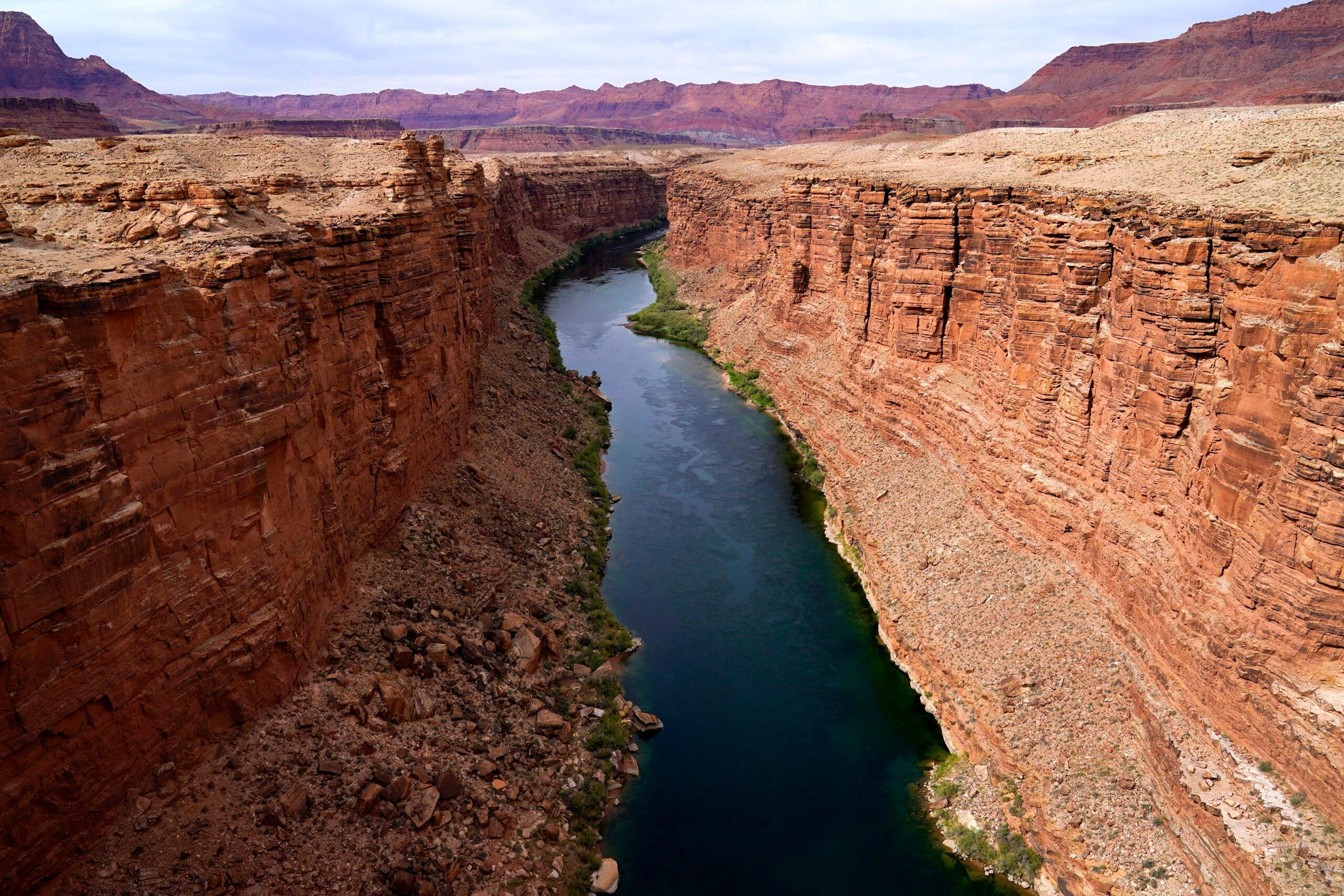
A new plan for managing an increasingly dry Colorado River is finally within sight.
Last week, the U.S. Bureau of Reclamation released an overview of five options for operating the largest reservoirs on the Colorado River when current rules expire in 2026. The bureau is expected to release a more technical analysis in December.
The draft options are meant to keep water above critical thresholds in Lake Powell and Lake Mead, two man-made reservoirs that have seen their water levels sharply drop since the early 2000s. Those reservoirs are crucially important for the seven states, 40 million people and 30 federally-recognized tribes who rely on the river. Mexico is also entitled to a share of the Colorado River’s water.
“These alternatives represent a responsible range from which to build the best and most robust path forward for the basin,” said Bureau of Reclamation Commissioner Camille Calimlim Touton in a statement.
The Colorado River is split into four upper basin states, including Colorado, and three lower basin states: Arizona, Nevada and California. Each basin is legally entitled to a set amount of water, but overuse, drought and increased temperatures have depleted the average amount of water in the river.
But exactly how states should cut back their water use is a complicated question. In March, the basins released vastly different proposals for how to manage the river. Both sides agreed that the lower basin states, which have historically used more water, should take cuts first. But the lower basin proposal wanted both sides to share the pain of further cuts, which the upper basin pushed back on, according to Douglas Kenney, director of the Western Water Policy Program at CU-Boulder.
“Going back to March when the Upper Basin and Lower Basin couldn't come to a unified proposal, it was just a line in the sand. So that's where we stand,” Kenney said.
The proposed options released last week could break the stalemate, and they include a “no-action” alternative, which the federal government will evaluate as a baseline. One option proposes deep cuts to lower basin water use, triggered by water levels reached in Lake Mead or Lake Powell.
Another option, known as “Alternative 2,” develops a new approach to figuring out how much water to release downstream, while calling for cuts and conservation across the two basins
“That is a big deal and that’s charting new ground in terms of how the basin is managed,” said Alexander Funk, director of water resources at the Theodore Roosevelt Conservation Partnership.
It is also one of three proposals that would account for unused and undeveloped water owed to federally recognized tribes. For generations, tribes have been unable to fully use Colorado River water that they are legally entitled to, which accounts for millions of gallons.
A third alternative builds on proposals submitted by conservation organizations, which would cut water use and create a new method to account for conserved water in Lakes Powell and Mead, according to Funk.
A fourth option blends elements of the upper basin and lower basin proposals and calls for cuts across each basin. Kenney sees the proposal as a jumping-off point for future negotiations so the basins can reach an agreement on their own.
“I think that's Reclamation's way of telling the states, you guys need to all come together…everyone needs to understand you're not going to get exactly what you want,” Kenney said.
The options must still go through a federal environmental review before one, or a combination of several can be selected. The options come at a time when several agreements that cut water use are expiring. Those include an agreement with Mexico, a 2019 “Drought Contingency Plan,” and operating guidelines from 2007.
A new plan must be in place by summer 2026.
- Arizona congressional delegation introduces $5 billion tribal water rights legislation
- Colorado River states remain divided on sharing water, and some tribes say their needs are still being ignored
- States have started negotiating new rules to keep the Colorado River from crashing. Here’s what they want









